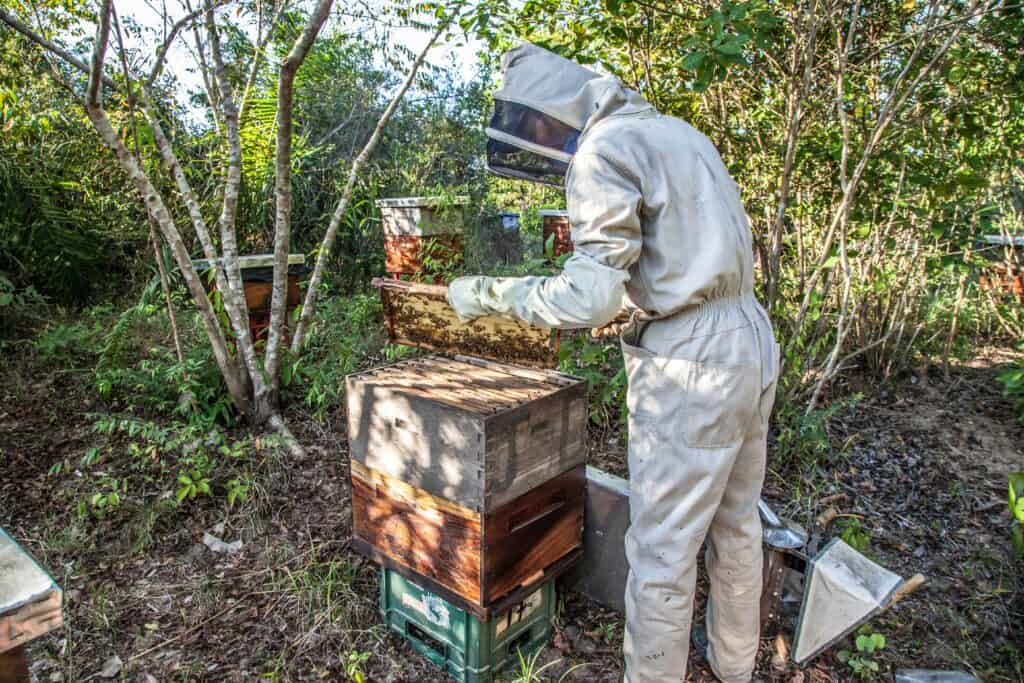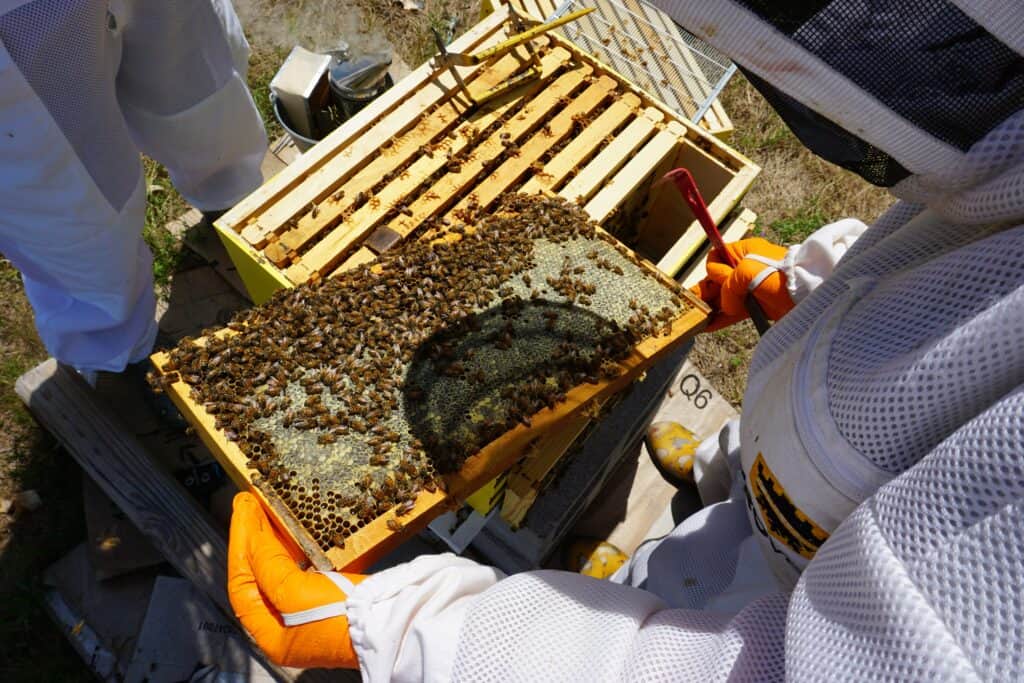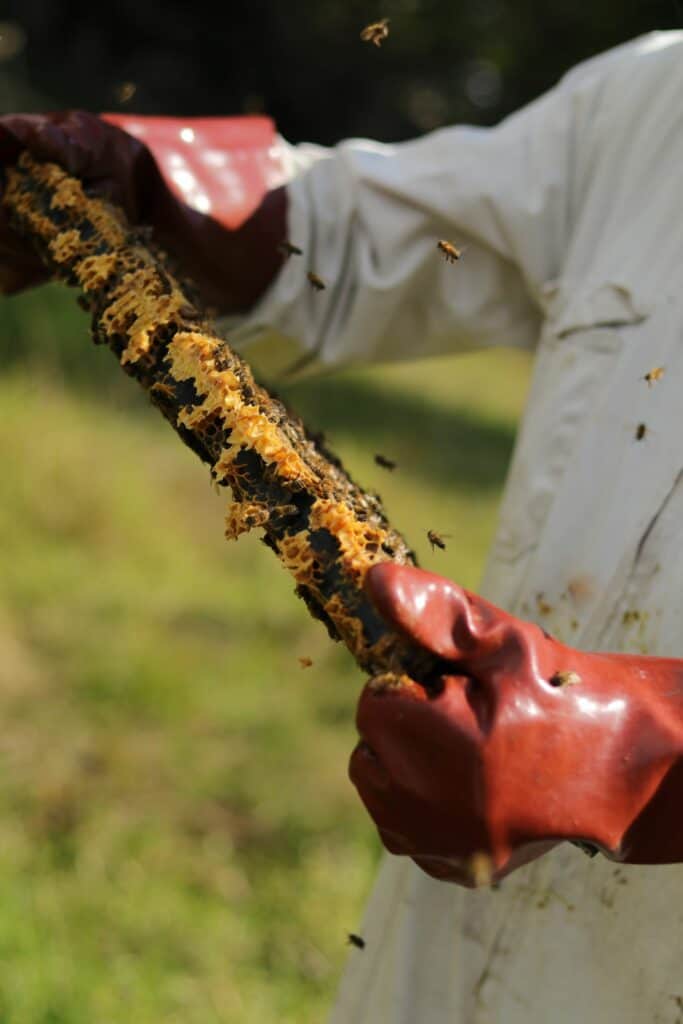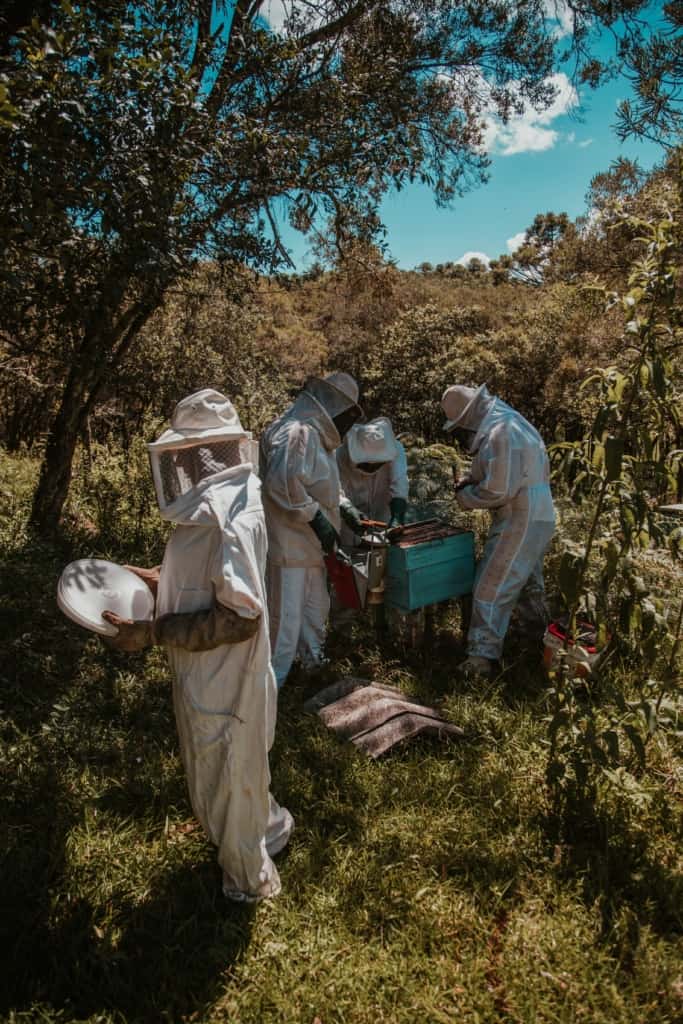Unique Manuka Factor (UMF): The Key Indicator of Manuka Honey‘s Potency
Manuka honey, derived from the nectar of the Manuka tree (Leptospermum scoparium), is a monofloral honey native to New Zealand and Australia. It has gained significant attention due to its unique chemical composition and health-promoting properties. One of the key indicators of Manuka honey’s potency is the Unique Manuka Factor (UMF), which is directly related to its antimicrobial properties. This essay will provide an overview of the UMF, its importance, and how it is used to determine the quality of Manuka honey.

Unique Manuka Factor (UMF)
The Unique Manuka Factor (UMF) is a grading system that measures the antibacterial activity of Manuka honey, specifically the non-peroxide antibacterial activity (Molan & Russell, 1988). The UMF grading system was introduced by Dr. Peter Molan, a leading researcher in the field of honey and its medicinal properties. The UMF system assesses the concentration of the key active compounds in Manuka honey, including methylglyoxal (MGO), hydrogen peroxide, and other phenolic compounds (Molan, 1992). A higher UMF rating indicates a higher concentration of these compounds and, consequently, a greater antibacterial potency.

Importance of UMF in Manuka Honey
The UMF rating plays a crucial role in determining the quality and potency of Manuka honey. Honey with a higher UMF rating has a greater antibacterial activity, making it more effective in treating infections and promoting wound healing (Willix, Molan, & Harfoot, 1992). Manuka honey with a UMF rating of 10 or higher is considered to be of high quality and suitable for medicinal use (Carter et al., 2016).

The UMF grading system has become an essential tool in the honey industry, as it provides a standardized method to measure the potency of Manuka honey. This allows consumers to make informed decisions when purchasing honey for medicinal or health purposes. It also helps to prevent counterfeit or adulterated products from entering the market, ensuring the authenticity and effectiveness of genuine Manuka honey.

Conclusion
In conclusion, the Unique Manuka Factor (UMF) is a vital indicator of Manuka honey’s potency and quality. It provides a standardized method for measuring the concentration of key active compounds responsible for the honey’s antibacterial properties. A higher UMF rating reflects a higher potency, making it more effective in promoting health and treating various conditions. By understanding the UMF grading system, consumers can make informed decisions when purchasing Manuka honey for medicinal purposes, ensuring they receive a product with the desired potency and effectiveness.
The Unique Manuka Factor (UMF) grading system has significantly impacted the honey industry, providing a reliable measure of Manuka honey’s potency and quality. This system aids in maintaining consumer trust and ensuring that genuine Manuka honey products with proven antibacterial activity are available in the market. Researchers continue to explore the potential therapeutic applications of Manuka honey, which may lead to new insights into the mechanisms underlying its beneficial properties. As the understanding of Manuka honey’s unique characteristics advances, the UMF grading system will remain a critical tool for assessing its quality and ensuring its effectiveness in promoting health and well-being.
References
- Carter, D. A., Blair, S. E., Cokcetin, N. N., Bouzo, D., Brooks, P., Schothauer, R., & Harry, E. J. (2016). Therapeutic Manuka honey: no longer so alternative. Frontiers in Microbiology, 7, 569.
- Molan, P. C. (1992). The antibacterial activity of honey: the nature of the antibacterial activity. Bee World, 73(1), 5-28.
- Molan, P. C., & Russell, K. M. (1988). Non-peroxide antibacterial activity in some New Zealand honeys. Journal of Apicultural Research, 27(1), 62-67.
- Willix, D. J., Molan, P. C., & Harfoot, C. G. (1992). A comparison of the sensitivity of wound-infecting species of bacteria to the antibacterial activity of Manuka honey and other honey. Journal of Applied Bacteriology, 73(5), 388-394.

